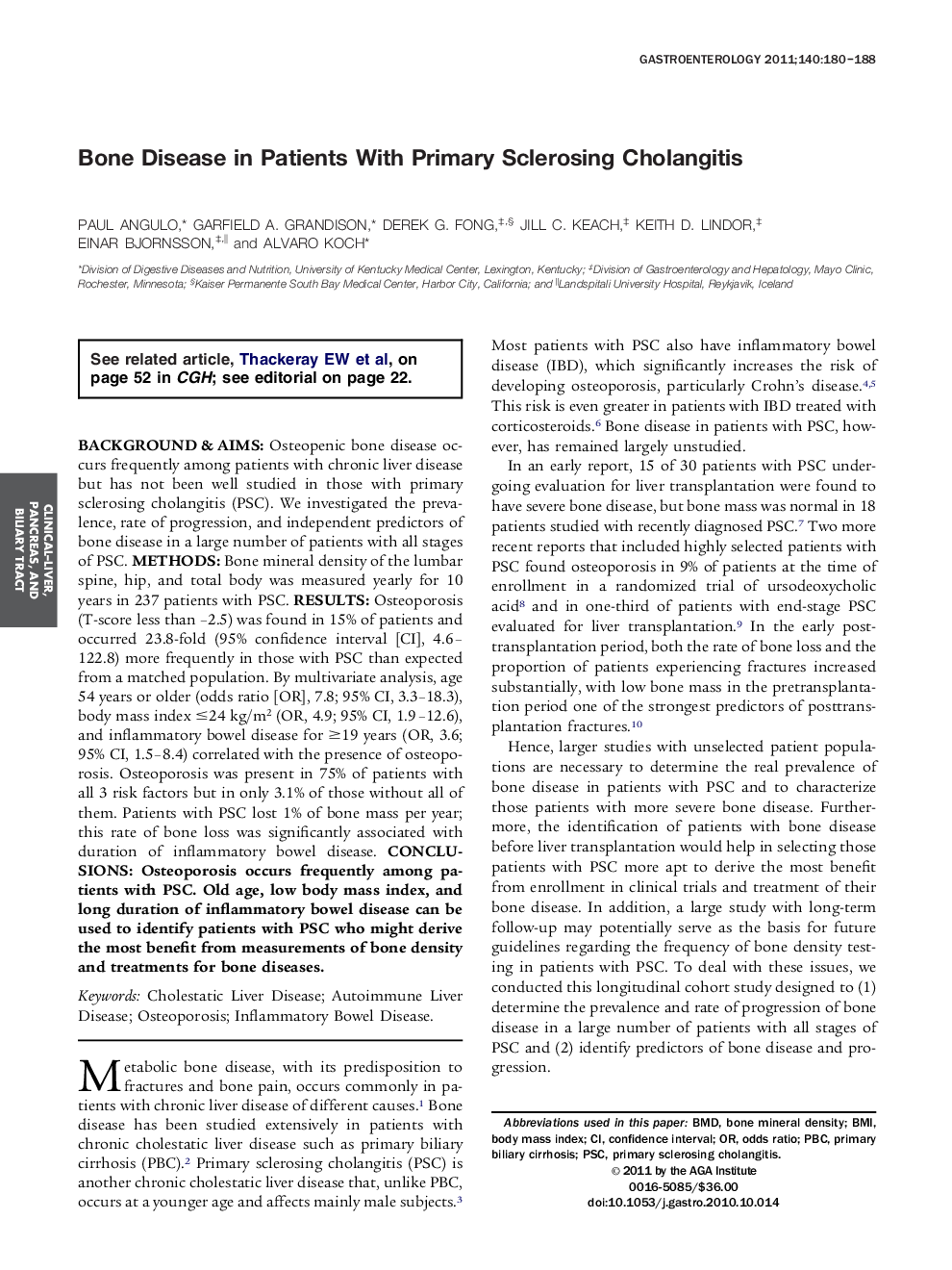| Article ID | Journal | Published Year | Pages | File Type |
|---|---|---|---|---|
| 3295510 | Gastroenterology | 2011 | 9 Pages |
Background & AimsOsteopenic bone disease occurs frequently among patients with chronic liver disease but has not been well studied in those with primary sclerosing cholangitis (PSC). We investigated the prevalence, rate of progression, and independent predictors of bone disease in a large number of patients with all stages of PSC.MethodsBone mineral density of the lumbar spine, hip, and total body was measured yearly for 10 years in 237 patients with PSC.ResultsOsteoporosis (T-score less than –2.5) was found in 15% of patients and occurred 23.8-fold (95% confidence interval [CI], 4.6–122.8) more frequently in those with PSC than expected from a matched population. By multivariate analysis, age 54 years or older (odds ratio [OR], 7.8; 95% CI, 3.3–18.3), body mass index ≤24 kg/m2 (OR, 4.9; 95% CI, 1.9–12.6), and inflammatory bowel disease for ≥19 years (OR, 3.6; 95% CI, 1.5–8.4) correlated with the presence of osteoporosis. Osteoporosis was present in 75% of patients with all 3 risk factors but in only 3.1% of those without all of them. Patients with PSC lost 1% of bone mass per year; this rate of bone loss was significantly associated with duration of inflammatory bowel disease.ConclusionsOsteoporosis occurs frequently among patients with PSC. Old age, low body mass index, and long duration of inflammatory bowel disease can be used to identify patients with PSC who might derive the most benefit from measurements of bone density and treatments for bone diseases.
